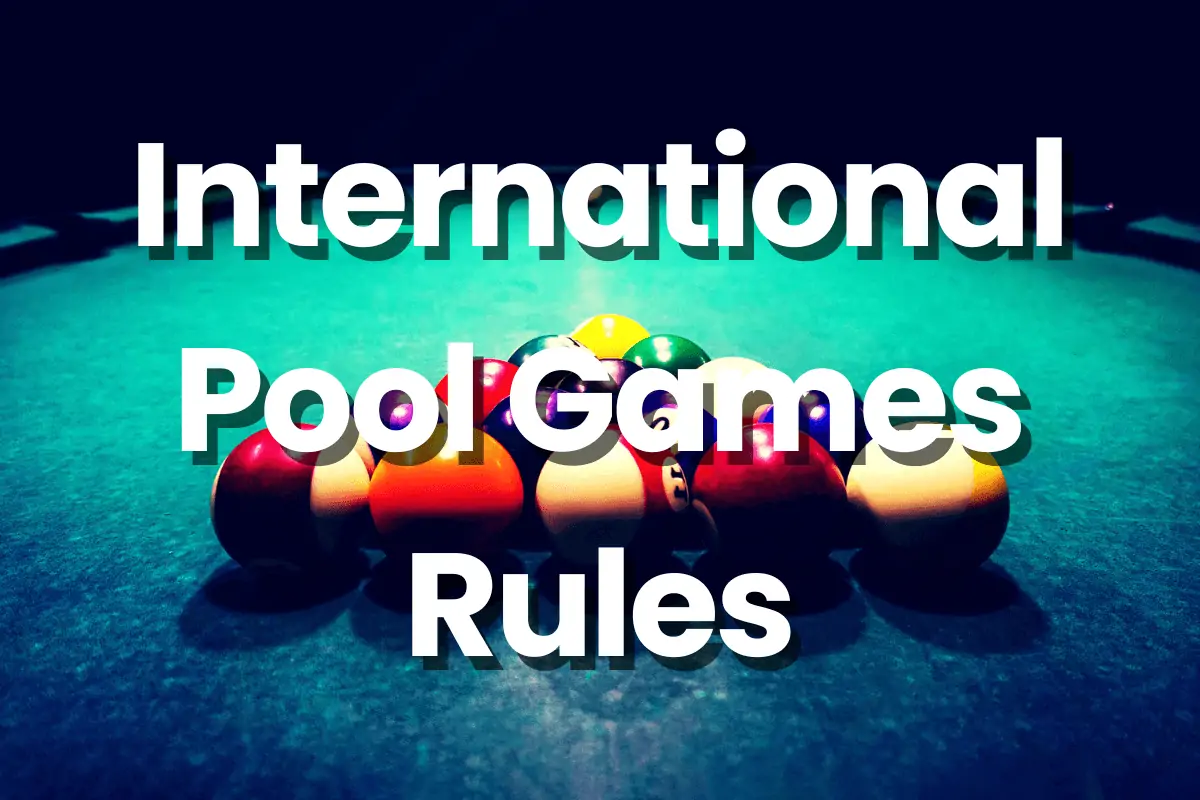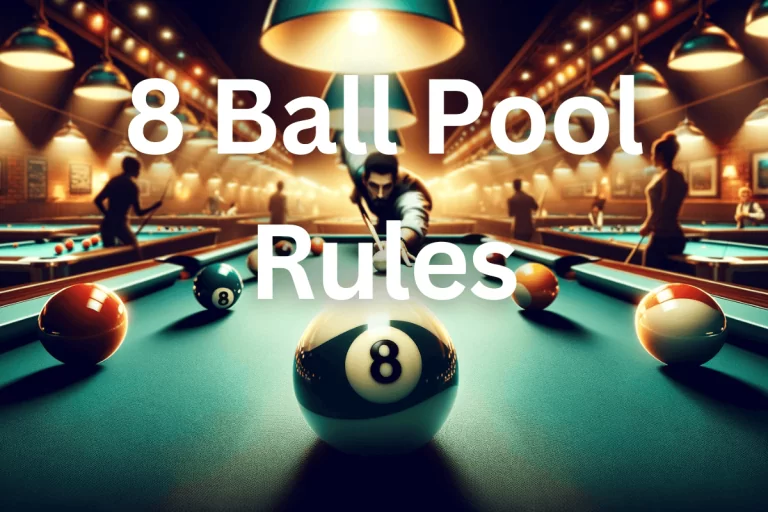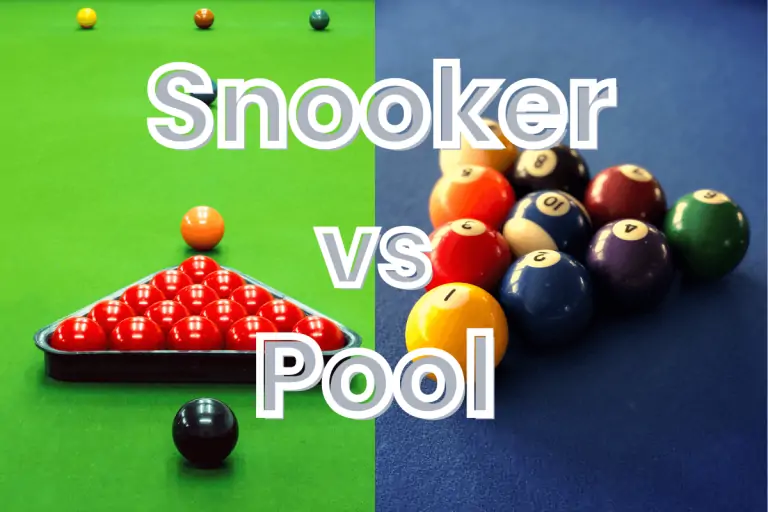A Complete Guide to International Pool Games Rules (2024)
Pool games, celebrated globally for their strategic depth and diverse variations, captivate players from all corners of the world. Each country and culture adds a unique twist to the rules and gameplay, enriching the global pool community with various styles. This article aims to offer a clear and comprehensive overview of the international pool game rules. Whether you’re a seasoned player or new to the world of cue sports, this guide is your gateway to understanding the international landscape of pool games.
The World of Pool: A Global Overview
The game of pool, known for its skill, precision, and strategic gameplay, enjoys a rich and varied history that spans across the globe. Its appeal lies not just in the game itself but in the cultural nuances that different countries bring to it.
Understanding the Global Appeal of Pool
Pool’s universal appeal can be attributed to several factors:
- Accessibility: Pool can be played by people of all ages and skill levels, making it a popular pastime worldwide.
- Cultural Integration: Many countries have integrated pool into their social and cultural fabric, often adding local rules and styles.
- Competitive Nature: Pool tournaments and championships have helped popularise the game globally, creating a community of players and fans.
A Brief History of Pool’s Evolution
- Early Origins: Pool’s early forms date back to outdoor lawn games similar to croquet in 15th century Europe. Over time, the game moved indoors, leading to the development of billiards.
- Billiards to Pool: As billiards spread across Europe and into America, it evolved. Different versions emerged, such as American four-ball billiards and the British game of snooker.
- Regional Variations: In each country, the game morphed in unique ways. For example, snooker gained massive popularity in the UK, while the US developed its own styles like 8-Ball and 9-Ball.
- Modern Pool: Today, pool is a conglomeration of various games with distinct rules and styles. International tournaments showcase these differences, celebrating the game’s diversity.
International Pool Games Rules
8-Ball Pool: The Universal Staple
8-Ball Pool, one of the most popular cue sports worldwide, has a standardized set of rules that are recognized internationally. However, some regional variations do exist. Here’s a detailed look at these rules and their variations.
Standard International Rules of 8-Ball Pool
Objective: The game is played with one cue ball and 15 object balls (7 stripes, 7 solids, and 1 black 8-ball). The objective is to pocket all of your assigned group of balls (stripes or solids) and then legally pocket the 8-ball.
Rack Setup: The balls are racked in a triangle at the foot of the table with the 8-ball in the center, the first ball of the rack on the foot spot, and a solid and stripe in the bottom corners.
Break Shot: The game begins with a break shot. If a ball is pocketed on the break and no foul is committed, the player continues their turn.
Turn Rotation: Players take alternating turns. A player’s turn continues as long as they legally pocket one of their balls and don’t commit a foul.
Calling Shots: In the international rules, shots are not typically called. This means that potting any of your group’s balls without a foul is considered a legal shot.
Fouls: Fouls include failing to hit your own balls first, pocketing the cue ball (scratch), and not hitting any balls with the cue ball. After a foul, the opponent gets ball in hand.
Winning the Game: A player wins by pocketing the 8-ball after all of their group of balls have been cleared from the table, provided no foul is committed on the shot.
9-Ball Pool: A Fast-Paced Alternative
9-Ball Pool, known for its quick pace and dynamic play, has a distinct set of rules that differ from 8-Ball Pool, making it a favorite in many international tournaments. Here’s a comprehensive explanation of its rules and how it’s played in various global competitions.
Standard International 9-Ball Pool Rules
Objective: The game is played with nine balls numbered 1 through 9 and a cue ball. The player’s goal is to legally pocket the 9-ball.
Rack Setup: The balls are racked in a diamond shape with the 1-ball at the top (apex) of the diamond, positioned on the foot spot, and the 9-ball in the center.
Break Shot: The game starts with a break shot. The player breaking must hit the 1-ball first and either pocket a ball or drive at least four numbered balls to the rails.
Shot Sequence: Players must hit the lowest numbered ball on the table first but can pocket any ball. A legal shot requires the cue ball to first contact the lowest numbered ball and either pocket a ball or drive any ball, including the cue ball, to a rail.
Turn Rotation: If a player pockets a ball, they continue their turn. The turn ends if the player fails to make a legal shot, commits a foul, or successfully pockets the 9-ball.
Fouls: Common fouls include scratching (cue ball in pocket), failing to hit the lowest numbered ball first, and not meeting the requirements of a legal shot. After a foul, the incoming player gets ball in hand.
Winning the Game: The game is won by legally pocketing the 9-ball. This can occur at any time during the game, even on the break shot.
Snooker: The British Invasion
Snooker, originating in the UK, has grown into an internationally acclaimed cue sport, distinguished by its unique rules, scoring system, and gameplay. This game requires not only skill and precision but also strategic foresight.
Standard International Rules of Snooker
Equipment and Balls: Snooker is played on a large rectangular table with six pockets. The game uses 21 balls: 15 reds, six colors (yellow, green, brown, blue, pink, black), and a white cue ball.
Objective: The main goal is to score more points than the opponent by potting balls in a specific order.
Gameplay Sequence: Players must first pot a red ball, which is worth one point, and then have the option to pot a color ball, which varies in points from 2 to 7, depending on the color. The colored balls are returned to their spots until all reds are potted, after which the colors must be potted in ascending order of their value.
Breaking: The game starts with a break from the “D” zone on the table. The cue ball must be placed within this area for the break shot.
Fouls: Fouls in snooker can result from various actions, such as failing to hit the correct ball, potting the cue ball, or causing a ball to jump off the table. Fouls award points to the opponent and often result in giving them control of the table.
Scoring System and Unique Gameplay
Scoring: Points in snooker are gained by potting the correct balls in sequence. Red balls are worth 1 point each, and colored balls range from 2 points (yellow) to 7 points (black).
Frame and Match Play: Snooker matches are divided into frames. A frame is won by the player who has scored the most points after all balls have been potted. Matches can be a best-of series of frames.
Tactical Play: Snooker involves a significant amount of strategic defensive play, where players aim to position the cue ball in such a way that their opponent cannot pot a ball, often leading to “safety battles.”
Maximum Break: The highest possible score in a single turn, known as a “147” or a “maximum break,” occurs when a player pots all reds with blacks and then all colors in sequence without committing a foul.
Blackball Pool: European Favorite
Blackball, a widely played variant of pool in Europe, stands out with its distinct rules and style of play. Also known as British eight-ball, Blackball has garnered a dedicated following due to its strategic depth and unique gameplay elements.
Standard International Rules of Blackball
Balls and Table: Blackball is played with 15 object balls (7 reds, 7 yellows, and a black 8-ball) and a cue ball. The table size is typically smaller than American pool tables.
Rack Setup: The balls are racked in a triangle with the black 8-ball at the apex, positioned on the foot spot. The reds and yellows are arranged alternately around it.
Break Shot: The game begins with a break shot. If a ball is pocketed on the break and no foul is committed, the player continues and must nominate their group (reds or yellows) based on the ball potted.
Free Table: After the break, the table is considered ‘open’. The first player to legally pot a colored ball after the break gets to choose that color as their group.
Gameplay: Players take turns to pot their group of balls. Unlike in some pool games, in Blackball, shots don’t need to be called, and combination shots (cannoning into another ball) are allowed.
Fouls: Common fouls include failing to hit your own balls first, pocketing the cue ball, or not hitting any balls with the cue ball. Following a foul, the opponent is awarded two shots.
Winning the Game: The game is won by potting all your group of balls, followed by the black 8-ball. Potting the black ball before clearing your group results in an automatic loss.
Carom Billiards: Three-Cushion Challenge
Carom Billiards, particularly the three-cushion variant, stands out in the world of cue sports for its complexity and emphasis on skillful cueing and strategic thinking. It presents a significantly different challenge compared to pocket billiards, focusing on caroms rather than pockets.
The Complex and Skillful World of Carom Billiards
- No Pockets: Unlike pool or snooker, Carom Billiards tables have no pockets. The game is played on a 5×10 foot table, emphasizing carom shots (where the cue ball contacts multiple balls).
- Balls Used: The game uses three balls: a white cue ball for one player, a yellow cue ball for the other, and a single red object ball.
Standard International Rules of Three-Cushion Carom Billiards
Objective: In three-cushion carom, the player must strike their cue ball so that it caroms off both the object balls and contacts the cushions at least three times before the last contact with the second object ball.
Scoring: Points are scored for each successful carom meeting the above criteria. The complexity lies in the requirement of the cue ball to hit the cushions at least three times, adding a significant challenge.
Gameplay: Players alternate turns. A turn continues as long as the player keeps making successful carom shots. The game is often played to a set number of points, commonly 25 or 50.
Fouls: There are fewer fouls in Carom Billiards compared to pocket billiards. The main rule is the cue ball must hit three cushions before the final contact with the second object ball. Failure to do so results in the end of the player’s turn.
Chinese 8-Ball: A Fusion Game
Chinese 8-ball is a captivating cue sport that has emerged as a fusion between the traditional 8-ball pool and Snooker. This hybrid game, rapidly gaining popularity, combines elements from both disciplines, offering a unique and challenging experience for players.
Introduction to Chinese 8-Ball
- Blending Two Worlds: Chinese 8-ball takes the object ball and pocketing concepts from the traditional 8-ball pool but is played on a table that resembles a Snooker table in size and design, including tighter pockets and a cloth that allows for faster ball movement.
- Global Appeal: Originating in China, this game has garnered international attention, with tournaments attracting players from around the world, drawn by its unique blend of precision and strategy.
Standard International Rules of Chinese 8-Ball
Table and Balls: The game is played on a 9-foot table, larger than a standard pool table but smaller than a Snooker table. It uses 8-ball pool balls (a set of stripes and solids, a black 8-ball and a white cue ball).
Rack Setup: The balls are racked in a triangle at the foot of the table with the 8-ball in the center, similar to a traditional 8-ball.
Break Shot: Players start with a break shot. A successful break requires at least one ball to be pocketed or at least four balls to hit the cushions.
Gameplay: Following the break, players attempt to pocket their designated group of balls (stripes or solids). Precision is key, as the tighter pockets of the Chinese 8-Ball table demand greater accuracy.
Winning the Game: The game is won by pocketing all your group of balls, followed by the black 8-ball. Unlike traditional 8-Ball, fouls lead to ball-in-hand anywhere on the table, increasing the penalty for mistakes.
Conclusion
International pool games, from the strategic 8-Ball and fast-paced 9-Ball to the precise Snooker and the unique Chinese 8-Ball, each have their distinct rules and appeal. Exploring these diverse games offers a glimpse into the rich tapestry of cue sports globally. Pool unites players across cultures, showcasing how a simple game of cues and balls can bridge differences, celebrate diversity, and create a shared passion among enthusiasts worldwide.
FAQs
What are the main differences between 8-Ball and 9-Ball Pool?
The primary difference lies in their objectives and ball setup. 8-Ball uses 15 balls (stripes and solids) to pocket all your group and then the 8-ball, whereas 9-Ball is played with balls numbered 1-9, and the aim is to legally pocket the 9-ball.
How does Snooker differ from traditional Pool games?
Snooker is played on a larger table with 21 balls (15 reds, 6 colors, and a cue ball). Players score points by potting balls in a specific sequence, contrasting the more direct pocketing goals of traditional pool games.
For more detail
What is unique about Blackball rules compared to American 8-Ball?
One unique aspect of Blackball rules compared to American 8-Ball is the emphasis on strategic fouls. In Blackball, players have the option to intentionally foul to gain a tactical advantage, such as disrupting their opponent’s position or clearing difficult balls from the table. Additionally, Blackball utilizes a smaller cue ball, contributing to tighter gameplay and requiring players to adapt their shot-making strategies accordingly.
What makes Carom Billiards different from other cue sports?
Carom Billiards, especially the three-cushion variant, is played on a table without pockets. Points are scored by caroming the cue ball off both object balls and the table cushions, requiring unique skills in ball control and strategy.







